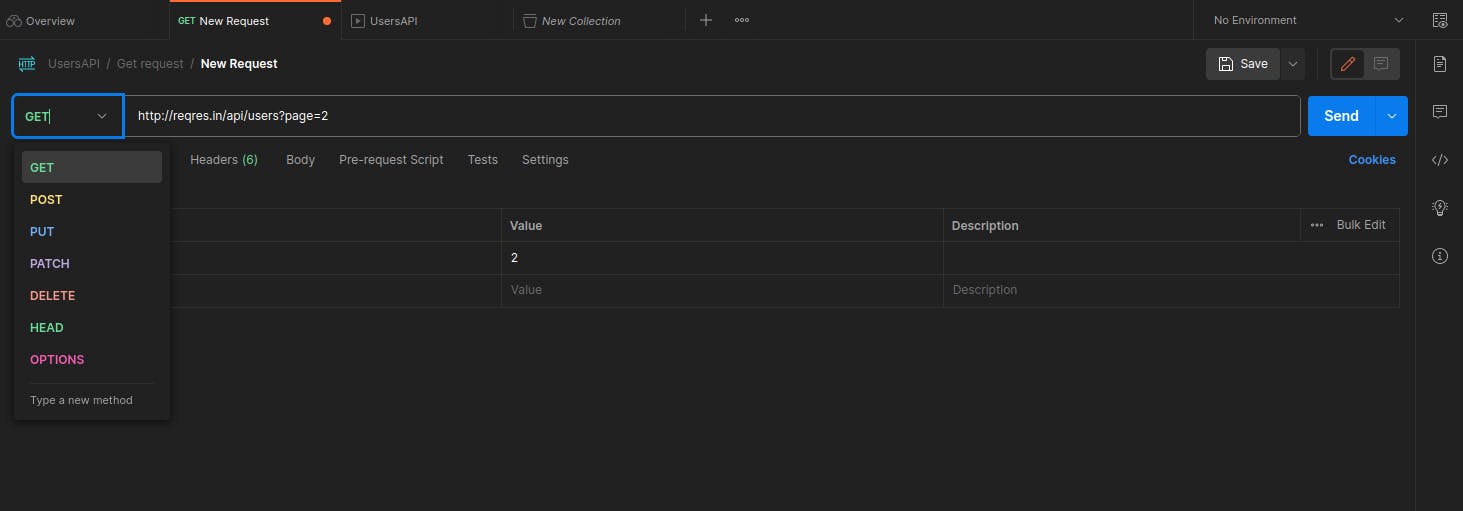Hey 👋 Everyone,
it's been a long time since I was not active here.., I'm back with a new blog, This time I have written this blog with my experience in API testing with Postman

🌟Introduction
In the modern development landscape, Application Programming Interfaces (APIs) have become the backbone of software applications. Whether you're developing web, mobile, or desktop applications, API testing is crucial to ensure robustness, functionality, and security. Postman, a powerful API testing tool, simplifies the testing process and provides a user-friendly interface for developers and testers. In this blog, we'll walk you through the essentials of using Postman effectively for API testing.
📥Installation and Setup
Before we dive into API testing, you'll need to download and install Postman. It's available for Windows, macOS, and Linux, making it accessible to most developers. Here is the Link: Download Postman, Once installed, open Postman and you're ready to begin creating an account.
📂Creating Collections
Collections in Postman are groups of related API requests, making it easier to organize and execute tests. To create a collection, click on the "New" button and select "Collection." Give your collection a name and click "Create."
On the left side of below image use see collections

🚀 Making API Requests
API testing involves sending requests to the server and examining the responses received. Postman supports various HTTP methods, also known as HTTP verbs, which dictate the type of operation to be performed on the server's resource. The commonly used HTTP methods are as follows:

in the above image, you can find where can make the requests
🔍 GET: The GET method is used to retrieve data from the server. It asks the server to return the specified resource without making any changes.
💡 Example: retrieving user data from the server.
GET /api/users/123
📝 POST: The POST method is used to submit data to the server. It creates a new resource or triggers some action.
💡 Example: creating a new user account on the server.
POST: /api/users Content-Type: application/json
{ "name": "John Doe", "email": "john@example.com" }
✏️ PUT: The PUT method is used to update or replace an existing resource on the server. It updates the complete representation of a resource.
💡 Example: updating a user's profile information.
PUT /api/users/123 Content-Type: application/json
{ "name": "Updated Name", "email": "updated@example.com" }
📝 PATCH: The PATCH method is similar to PUT, but it only includes the changes to be made. It is used for partial updates.
💡 Example: changing a user's email address.
PATCH /api/users/123 Content-Type: application/json
{ "email": "updated@example.com" }
❌ DELETE: The DELETE method is used to request the removal of a specific resource from the server.
💡 Example: deleting a user account.
DELETE /api/users/123
🔍TRACE: The TRACE method is used to retrieve a diagnostic trace of the current request/response cycle. It's mainly used for debugging and troubleshooting purposes, but it's rarely used in practice due to security concerns.
🔗CONNECT: The CONNECT method is used to establish a network connection to a resource over HTTP. It's typically used for proxying requests, and it's not commonly used directly by clients.
🛠 Managing Environments and Variables
Postman allows you to parameterize your requests with environments and variables, making them more flexible and reusable across different testing scenarios.
🔒 Authentication and Authorization
APIs often require authentication and authorization for access. Postman supports various authentication methods such as Basic Auth, OAuth 2.0, and Bearer Tokens.
💻 Writing Tests
Postman provides a powerful scripting feature to add tests to your API requests automatically. These tests help ensure that your API is functioning as expected.
🤖 Test Automation:
Postman offers test automation capabilities through its Collection Runner and Newman, allowing you to run your collections from the command line or integrate them into your CI/CD pipeline.
🎯 Data-Driven Testing:
Data-driven testing allows you to test your API with multiple sets of data to validate its behaviour under various scenarios. Postman lets you import data from CSV files, JSON files, or databases, making data-driven testing a breeze.
🔍 Monitoring and Mocking
Postman provides monitoring capabilities to keep track of API performance over time. Additionally, you can create mock servers to simulate APIs during development.
🤝 Collaboration and Sharing
Postman supports team collaboration, allowing you to share collections, environments, and test results with team members. Integration with version control systems like GitHub enhances collaboration within the development team.
Conclusion
🚀Mastering API testing with Postman can significantly improve the quality and reliability of your applications. From creating collections and requests to writing tests and automating the process, Postman provides a comprehensive toolset for API testing. By utilizing its features effectively, you can streamline your testing workflow, identify and fix issues early in the development cycle, and ultimately deliver a better product to your users.
Remember, practice makes perfect! So, start exploring Postman and unleash its full potential to become a proficient API tester.
Happy testing! 😊
Like, Share, and Follow me for more blogs Here, and informative posts on Linked and Twitter. Still, we have a long way to go 🚀😊

